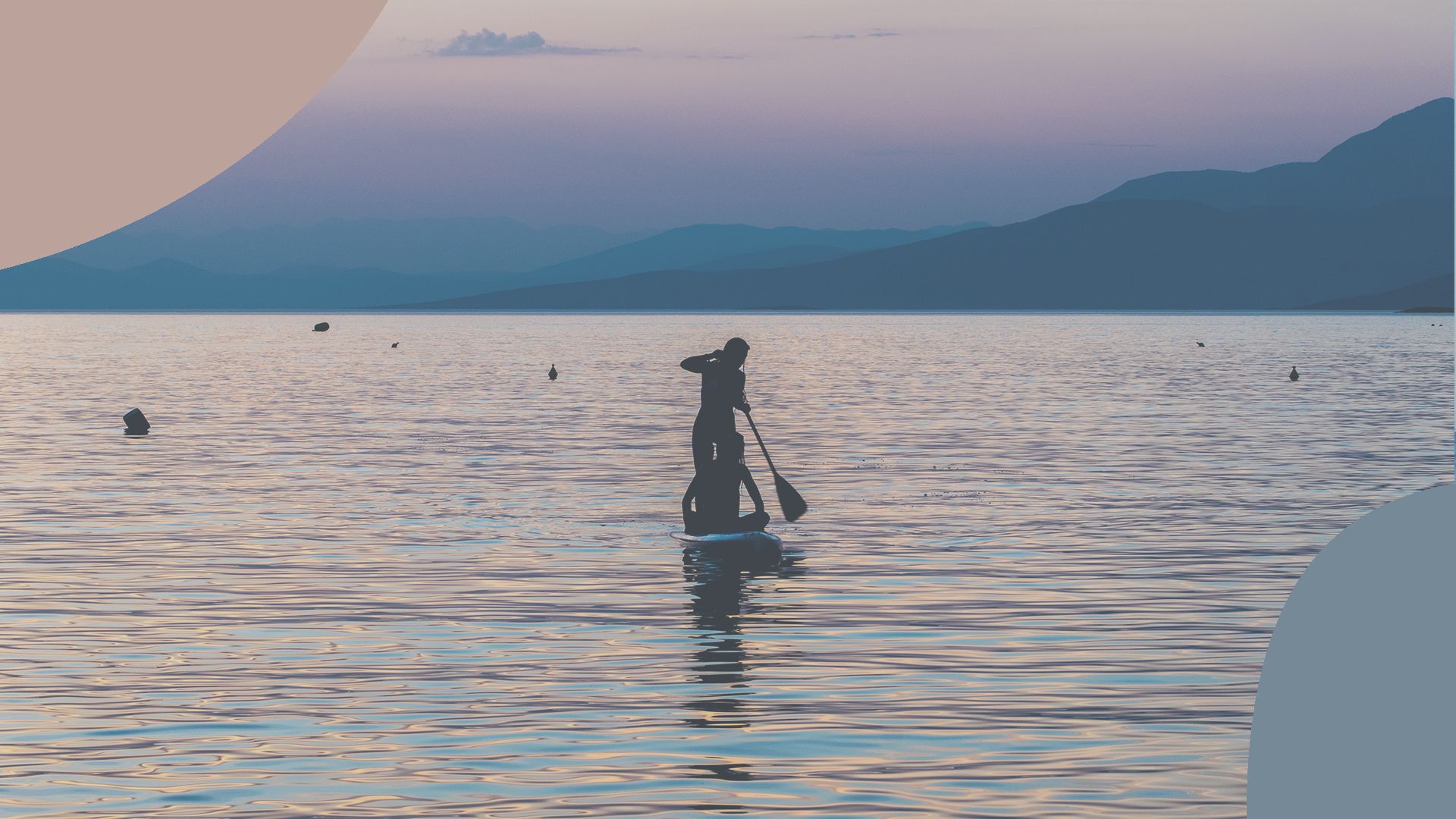How to Ask for (and Get) Vacation Time as a Remote Worker

by Nathan Allen

Check your Gmail. No, not the stack of emails from your coworkers or the ads for “five vegetables you should never eat!” (only five?) but your automated vacation reply. What does yours say? A certain writer who shall remain nameless saw “I’ll be away”—dated October 2017.
So why is it so tough for a remote worker to take a vacation?
Vacations are good for us. Science says so. Stepping away from the constant grind of work can reduce stress, boost our ability to sleep, decrease the risk of heart disease, and increase productivity once we do return to the work—whether that’s an onsite office or a home one. Vacations could even lengthen our lives.
Yet people in the United States in particular persistently resist rest and restoration. In 2018, Americans left a record-setting 768 million vacation days (that’s more than 2 million years’ worth) on the table. Of those, workers completely forfeited 236 million days. One reason for this is that US employers are granting more paid time off than ever before. That’s the good news. But the less-good news is that in 2018, 55% of employees did not take their full earned vacation. That’s $65.5 billion in lost benefits—or $571 per worker in paid time off earned and then donated back to their employer.
“Americans do not take enough vacation and if they have ‘vacation days’ don’t use all of them,” says Denise Rousseau, a professor of organizational behavior and public policy at Carnegie Mellon University. “It’s a problem because work with all its challenges and stimulation is also depleting—of energy, physical and mental. Recovery is critical and deep recovery takes time to settle into, a reason why vacation should involve blocks of time and not a day here and there.”
For remote workers who are freelancers, the stats are even starker: 92% of freelancers said they could not take a nonworking vacation.
Why Vacation Is Even More Important When You Are a Remote Worker
Even though plenty of sources have identified the benefits of working remotely, if you’re a remote employee, it can be difficult to take time off. If you’re a freelancer, which means you must reassign incoming work as well as pay for your own vacation, taking time off is even more of a challenge.
For either type of remote worker, the connectivity that allows us to work from home also makes separating from work more difficult. The phone is always there. The laptop is always there. Your workspace is in the next room, not the next town. The flexibility cuts both ways, too. You may be able choose your work hours—but your work hours can wind up choosing you, and you have a harder and harder time truly getting away.
Sheila Repeta, the director of people at TeamSnap, a sports team management and software company, agrees and says that, as a result, vacation is even more important for remote workers.
“For many individuals, the drive into and home from work is a ‘reset’ and it’s easier to separate work from your home life when you leave most of it at the office,” Repeta says. “The more flexible work gets and the more remote work becomes, those lines get blurred. What was once work-life balance is now work-life integration.”
Rousseau notes that the reality of remote workers—their remoteness—can make employees seem invisible to managers and customers until they’re needed. “Hence the pressure to be ever-available to remind our stakeholders that we are working on their behalf,” Rousseau explains.
But just like physicians and psychiatrists need to take a break from their physically and mentally demanding jobs, Rousseau says it’s just as important for consultants, engineers, and other more typical remote-work positions to take formal vacations.
“Formal vacations—where you tell people you are off and will be unplugged—are valuable for creating punctuation, a psychological break, with work,” Rousseau points out. “Reluctance to tell people you are unplugged is a sign of insecurity and work addiction. These two conditions interfere with mental and physical well-being, so vacation is a way of mitigating their effects.”

Many remote and distributed companies like TeamSnap have added unlimited vacation as a perk. As their website puts it, “That basically means that if your workload allows, and you clear it with your team, you can take off as much time as you need. Nobody’s counting. But a policy like this, as well intended as it is, doesn’t always work like companies planned. Though that’s not about taking too much vacation time. “There are absolute risks associated with unlimited vacation time—the dark side through underuse leading to burnout is very real,” Repeta says.
TeamSnap therefore manages underused vacation in two ways. First, Repeta notes, the employee handbook differentiates between flextime and vacation time. “We know that folks will take an afternoon or a day off here or there intermittently and we intentionally call that flextime,” she says. “In most remote workplaces, people misattribute that with ‘vacation’ time.”
They also make sure to clearly define vacation time. “We explicitly encourage folks to take a few full weeks of vacation time with consecutive days off, fully unplugged from work,” Repeta says.
Remote workers, employees or freelance, might find it helpful to apply these definitions to their thinking about time off.
Practical Steps for Taking Time Away
These definitions are a great start, but stepping away completely is easier said than done. The remote workers working on this article totally feel you on that. But don’t give up. Here are some practical tips to approach the vacation conversation with your supervisor or manager—or without yourself, if you’re a freelancer.
- Remind yourself, often, that taking a vacation is good for you—and your employer(s). Statistically, more vacation means more success at work. While the average annual number of vacation days US employees take dipped from 21.1 in 1996 to 16.1 in 2016, that number has started to tick back up in recent years. So, if you’re wanting to take more days off, you’re not alone.
- Review your company’s vacation policies and make sure there haven’t been any changes since the start of the coronavirus pandemic. Then review how much vacation you currently have. If you’re a freelancer, check your upcoming project calendar and your budget.
- Pick the exact dates you want to take off and have a reason or justification for those specific dates. It could be family related: This is when my brother is getting married or my sister is due to have her baby. Or pitch it as work related: These two weeks are during a less busy time or I know every other team member will be at work during this week. If you’re a freelancer, picking a specific date (and sticking with it) helps you plan and helps you avoid taking your vacation “some time” that never comes.
- Communicate with your supervisor (freelancers: clients) in their preferred method as early as possible before your planned vacation. For remote workers, email is probably best. Why? You can fully explain your reasoning and it’s all in writing. If your supervisor prefers to have a conversation, a Zoom or FaceTime meeting also works. Not sure of their preference? In your email, ask to set up a videoconference or a time to call and discuss.
- Communicate with key team members to develop a plan to cover your work so you can fully vacate-tion. Yes, we made that up, and we like it. Do this as soon as possible after selecting dates or getting approved. Rousseau advises “managing relationships to alert others with whom you work of your plans, see if any adjustment in timing might help reduce stress, and then go for it.”
- Over-communicate in the time leading up to your vacation to tie up any loose ends. Don’t be annoying—but be borderline-annoying in reminding people you’re going to be away and unplugged. Note that being “away and unplugged” requires that you exercise the self-discipline of not checking work emails or voicemails when you’re on vacation. If you say you’re away and then butt in on an email chain, you’ve missed the point.
- Enjoy this departure ritual: Just before you sign out and off, block out your calendar and put those automatic “away” messages on your email and Slack. Say “Ahaaaa!” when you hit “save.” (Ninja dance optional). Walk away. Don’t look back.
So, for how long? Consecutive days is key here. A week is a good start. Two weeks is even better. Why two? Even though you’ve done all the above, it will likely take you a few days to shift gears and settle into your vacation routine. If you take a week, by the time you start to settle, it’s almost time to go back to work. Two weeks gives you enough consecutive days to really get away, restore, and revitalize.
“I spent a week at a surfing and yoga camp in Costa Rica and followed my own advice (in unplugging) except for one Zoom call,” Rousseau says as an example of getting away. “It was weird at first and then lovely.”









